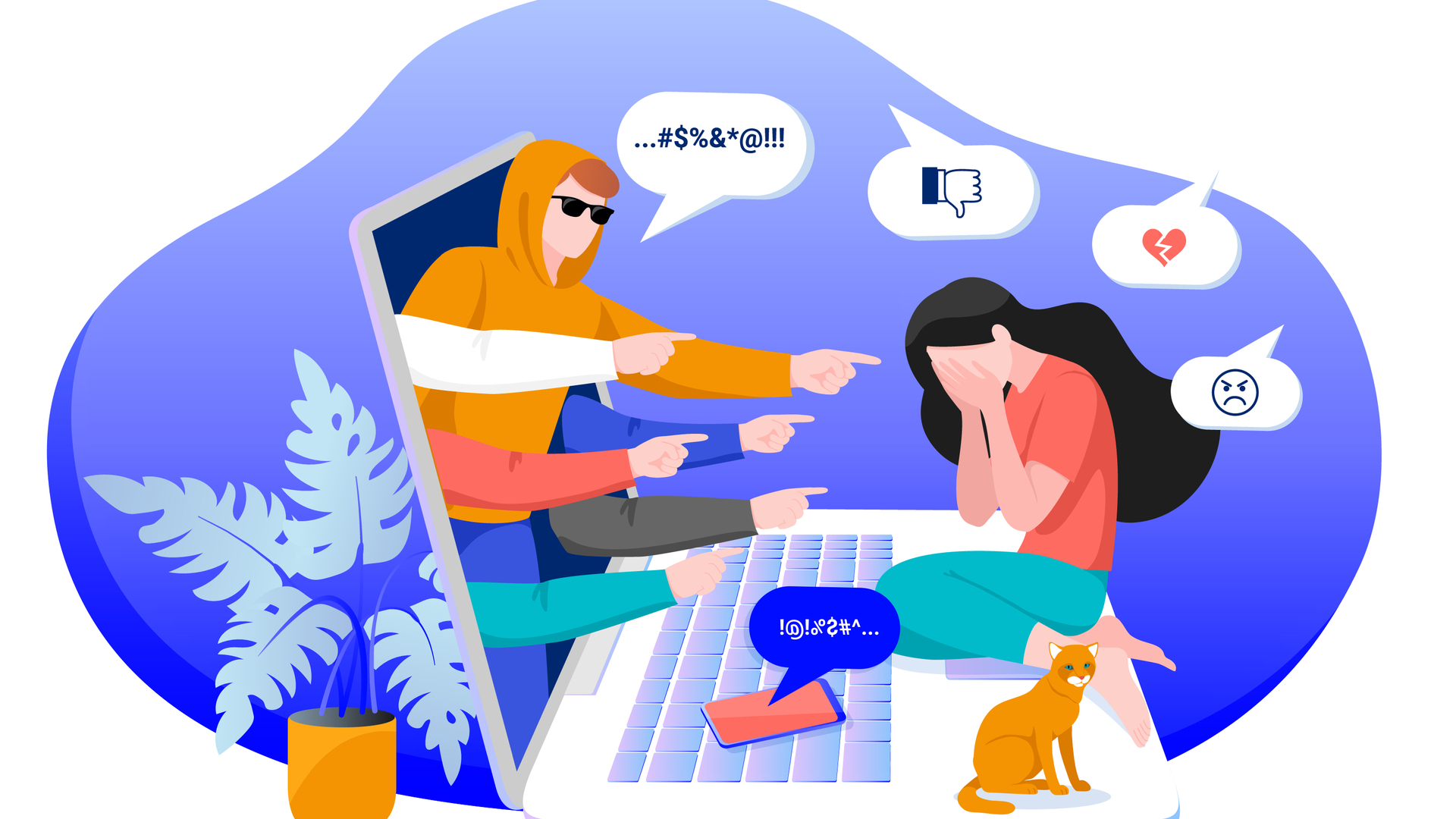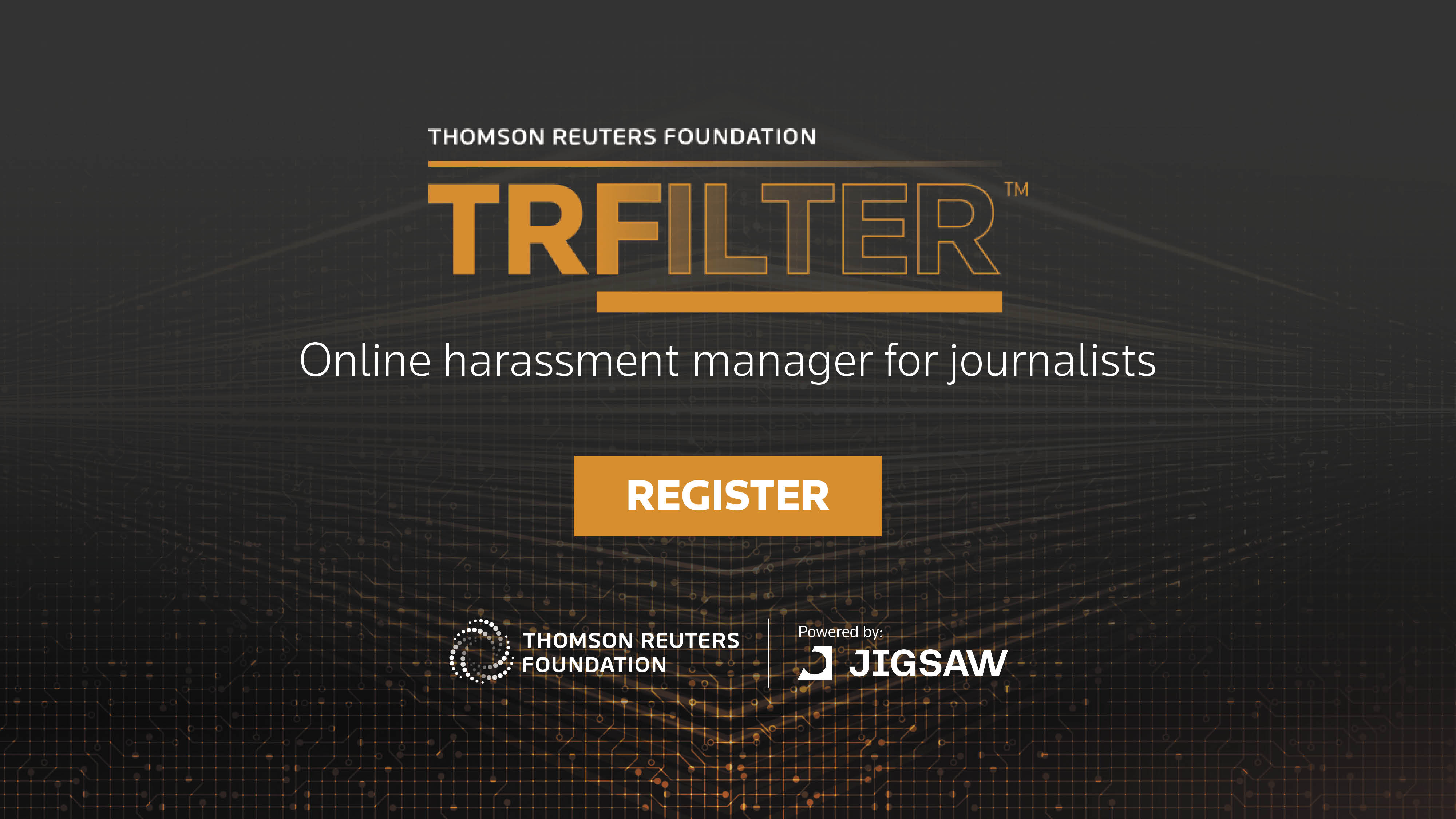The tech seeking to protect journalists from online harassment
TRFilter hopes to fill the lack of tools managing online violence

A VPN may be the perfect tool to secure your privacy and anonymity on the internet. However, there are many other dangers out there that even the best VPN services may fail to protect you from. One of those is cyber harassment.
For journalists, maintaining an online presence at all times is a necessity that comes with the job. And while social media is an amazing tool for connecting with sources and informing the public, it also allows online violence to spread untroubled.
Dealing with cyberattacks hugely impacts on reporters' mental health. It's also time-consuming due to the lack of tools for managing the incidents. As a result, many victims end up not reporting abuse as the sole act of scanning through hurtful messages puts them off from finalizing legal action.
The need for a tool that can help journalists cope with cyber harassment is exactly the idea behind Thomson Reuters Foundation's new tool TRFilter.
We spoke with the CEO of the company Antonio Zappulla OMRI to learn more about this innovative resource. Here's what he said.

Antonio Zappulla OMRI is CEO of the Thomson Reuters Foundation, the corporate foundation of Thomson Reuters working on advancing media freedom, raising awareness of human rights issues, and fostering more inclusive economies. He is also the founder of Openly, the world’s first platform dedicated to fair, accurate and impartial coverage of LGBT+ stories. With a series of awards under his belt, he ranked first in the 2018 Financial Times' OUTstanding list of third-sector LGBT+ executives and, in 2018, he was named a European Young Leader by Friends of Europe.
What's the idea behind TRFilter?
Access to accurate, trusted and unbiased information is the cornerstone of any free, fair and informed society. Yet journalists around the world are facing an onslaught of online harassment - from targeted smear campaigns to state-sponsored attacks - in attempts to discredit or silence them.
With more than 75% of women journalists reporting to have experienced online violence, it’s clear that social media platforms and news outlets are struggling to keep pace with the scale of the scourge. And this has profound knock-on effects in terms of psychological trauma and self-censorship, which is starkly illustrated by more than 40% of female journalists saying that they stopped reporting a story as a result of suffering online attacks.
Compounding this deeply-entrenched issue is the lack of tools available to journalists. Current guidance often points to users limiting their social media activity or asking colleagues, friends and family members to filter the harmful content when they feel distressed.
The Foundation’s extensive experience of collaboration with global partners, combined with our unique ability to leverage the twin engines of media and the law, places us at the center of international expertise to support media freedom and defend human rights. That’s why we partnered with Google’s Jigsaw to develop TRFilter - the first tool for journalists and media practitioners to document and manage online violence. In essence, it empowers users to regain control of their social media feeds, take action against perpetrators, and safeguard their well-being.
We’re in the process of rolling out TRFilter to journalists around the world, and it’s our hope that the tool helps to protect reporters, and ultimately the future of independent media as a whole.

How does the software work in practice?
TRFilter is a free web application that syncs with the user’s Twitter account and uses Perspective API technology to identify harmful comments. It limits journalists’ exposure to abuse by allowing them to hide comments and block or mute accounts at scale, without reviewing the content.
Users can search for and review tweets based on specific hashtags, usernames, keywords or dates, with the tool detecting and flagging comments that are most likely to be toxic.
What really sets TRFilter apart is the ability for users to create customizable reports. These reports can then be downloaded directly from the tool and shared with trusted third parties, such as newsroom management or law enforcement.
How does it differ from similar software, like Jigsaw Harassment Manager for example?
TRFilter is powered by the same technology, thanks to Jigsaw’s close partnership with the Foundation. During the development of this cutting-edge technology, journalists from the Foundation’s global news team trialed Harassment Manager in its early stages and were involved in the feedback process.
Based on our legacy of more than 30 years’ experience strengthening the ecosystem for independent media and training journalists around the world, we are uniquely positioned - and very proud - to be chosen as Jigsaw’s first implementation partner and to roll out the tool to our global network. Earlier this year, Jigsaw open-sourced the code for Harassment Manager in order to maximize access to other organizations that are seeking scalable tech solutions to address online toxicity.
As it is now available only on Twitter, are you planning further extensions to other social media platforms?
This is the first iteration of TRFilter, and we welcome any opportunities to expand the technology to other platforms. Our goal is to make the tool accessible to as many journalists around the world as possible, and this can only be achieved through continuing to facilitate and grow cross-sector collaboration.

Have you already received feedback from journalists using the tool?
So far, we’ve had an overwhelmingly positive response from journalists and media practitioners, who see TRFilter as a much-needed and essential resource. We’ve heard that the ability to create a report will save journalists huge amounts of time and help to alleviate stress, as they will no longer need to manually track, document and be exposed to the online harassment to which they are subjected.
We’re also in conversation with several newsrooms to see how we can work together to get the tool in the hands of their journalists and embed it within their safety practices.
As this is the first iteration of the tool, we are eager to gather feedback from our users so that we can continue to develop and improve TRFilter.
Are you working on other software that can help journalists fight back online threats?
TRFilter is the latest in a suite of initiatives that the Foundation, in collaboration with partners, has pioneered to protect journalists from online violence and defend media freedom.
For instance, last year we partnered with UNESCO, the International Women’s Media Foundation, and the International News Safety Institute to develop a number of practical and legal tools for journalists, media managers and newsrooms to counter harassment. This ranged from a guide providing concrete actions that women journalists can take to limit the risk of digital attacks, to a checklist on gender-sensitive safety policies for newsrooms. We’re currently working on making these resources interactive, which, we hope, will help to make this key information even more accessible and easy to digest.
Another sinister trend we’re increasingly seeing is the weaponization of laws against media practitioners. From fake news and disinformation laws to false allegations of fraud, corruption and breaches of copyright, these tactics pose a severe threat to a free press. In response to this, we’ve partnered with the Committee to Protect Journalists and Media Defence to launch The Legal Network for Journalists at Risk (LNJAR). The initiative strategically coordinates the different legal services offered by organizations that work to protect journalists and independent media outlets. Assistance offered through the network ranges from urgent legal representation, to ongoing assistance for the duration of a case, to systemic support to improve the legal environment in which the media operates.
Defending media freedom is a core focus of our work at the Foundation, and we’ll continue to innovate in this space and help to foster a positive environment for journalists to operate independently and safely. The stakes are high, with a free press the very bedrock of a democratic society.
Meet the people helping activists to fight against digital surveillance
Are you a pro? Subscribe to our newsletter
Sign up to the TechRadar Pro newsletter to get all the top news, opinion, features and guidance your business needs to succeed!

Chiara is a multimedia journalist committed to covering stories to help promote the rights and denounce the abuses of the digital side of life – wherever cybersecurity, markets, and politics tangle up. She believes an open, uncensored, and private internet is a basic human need and wants to use her knowledge of VPNs to help readers take back control. She writes news, interviews, and analysis on data privacy, online censorship, digital rights, tech policies, and security software, with a special focus on VPNs, for TechRadar and TechRadar Pro. Got a story, tip-off, or something tech-interesting to say? Reach out to chiara.castro@futurenet.com